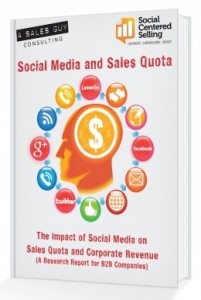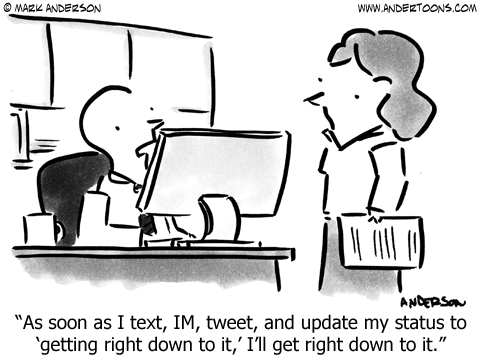How do you measure the ROI of social selling, especially against traditional selling activities, techniques or tactics?
I always find the preoccupation with social selling ROI interesting. Why such an emphasis on whether or not using social networks as part of the selling process is working when typically, sales leaders NEVER evaluate what their sales people are doing when they are not in the office. In other words, do they question the ROI or evaluate the effectiveness of the phone calls, lunch meetings, networking events or conferences that their reps attend?
I know sales people who meet with anyone who has a pulse. Where is the ROI in that?
But, of course, I agree that measuring activity - all sales activity and that includes the use of social media for selling - is very important. I also know that social selling actually can lead to sales people achieving their quota’s more often.
Measuring ROI doesn’t have to be challenging. If you read my work or have heard me speak, you know that I advocate strategy, skills and execution as the recipe for success. Your strategy - or call it a plan - also includes the things you want to track.
Activities to Track
I’m just going to assume that your sales people have decked out their LinkedIn profile. At this point, that should be the obvious first step, but you might want to thereafter track how often they change up white papers, case studies or topical presentations on their profiles. At a minimum, I suggest changing out that content once a month.
Other activities to measure, which most sellers are usually most interested in are:
- Size and quality of LinkedIn connections that are a mix of people who can refer business and/or can buy from your company. This is NOT simply a numbers game. If you are not connected to potential buyers or people who can refer business to you and you to them, the power of using LinkedIn has been missed.
- Number of referrals received and from whom. Nothing gets you in the door more quickly than a referral from someone trusted and respected. As much as 44% f the time, you can secure that meeting. Sponsored by a trusted insider at the prospect company? The meeting acceptance rate jumps to 84% based on cited statistics in Selling to the C-Suite.
- Number of net/new meetings - discovered and cultivated via social - with qualified prospects conducted each week, month, quarter. This can be tough because there is generally not a “straight line” between the actual activity and the ability to secure a meeting. Sooo…your sales people need to get in the habit of asking - then writing down- how a prospect proactively reached out to them or how the process of securing that meeting happened.
Speaking on webinars, conferences or participating on panels is an excellent way to gain visibility, but choose wisely. Even if I speak to 60 people, I can’t necessarily draw a straight line to a sale. It is a combination of things that lead to visibility.
Influence Counts Too
Driving revenue is obviously a sellers job, but that should not be to only measure of your effectiveness using social media. What about influence? You can use Klout to determine how well you influence your network.
Or, use TweetReach to judge the effectiveness of your tweets.
You should pay attention to the people commenting on your status updates on LinkedIn or how many people started to connect with you because they like what you post in groups.
And, continue the practice of giving things away that you can track. Presentations or webcasts shared via Slideshare, “how to” guides, ebook or white paper that be downloaded off the web, shared after speaking at an event or posted on your LinkedIn profile.
Focus on the Important
Don’t believe the hype that using social selling strategies leads to an immediate explosion of leads in the pipeline or revenue closing by itself over night. Like anything else, sales success takes consistent hard work and with buyers connected to multiple communication platforms, your sales people need to be ready.
But the most important thing to keep in mind… determining real ROI is about focus on the right activity not just the fluffy stuff.







